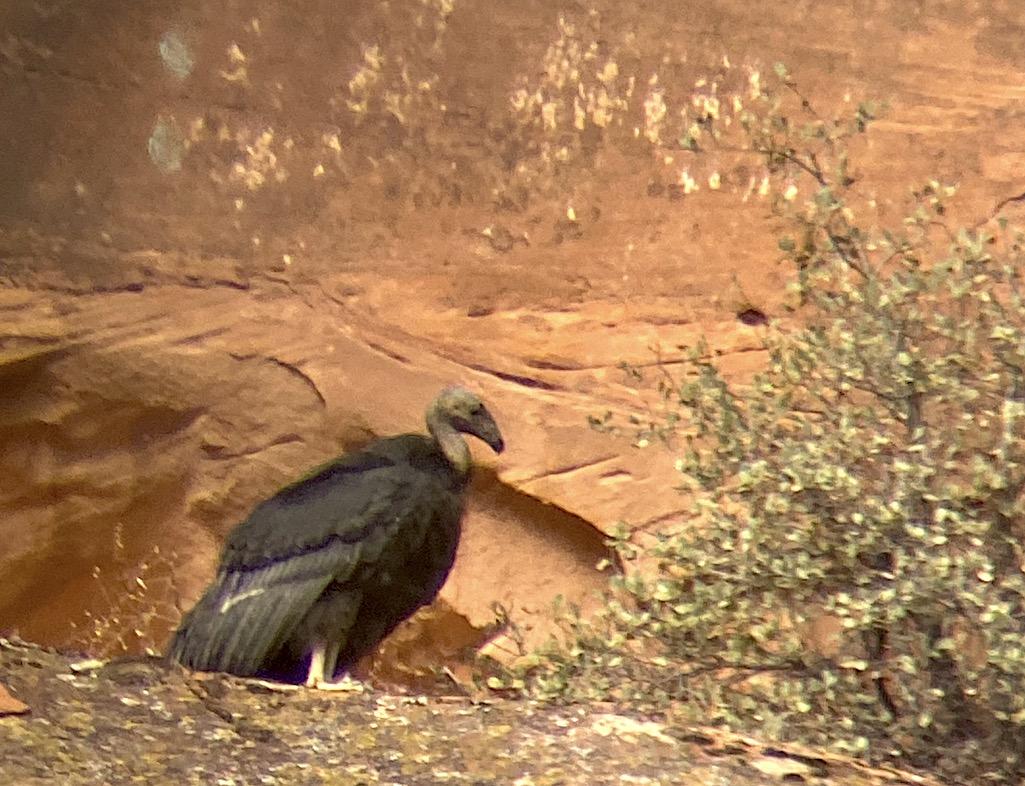
A second condor fledgling has taken to the sky at Zion National Park/NPS
Two years after Zion National Park saw its first wild-hatched condor take to the skies, another has accomplished the same feat.
California Condor nestling #1111 in late August took off from its nest cave on the cliff just north of Angels Landing. Condor #1111 is the sibling of condor #1000 (aka 1K) who was the first wild-hatched nestling to fledge in Zion National Park back in 2019.
Biologists estimate the egg was laid mid-February and hatched mid-April. Zion National Park is a member of The Southwest Condor Working Group that includes state wildlife agencies of Utah and Arizona, federal partners including U.S. Fish and Wildlife Service, Bureau of Land Management, and National Forest Service, and private partners including The Peregrine Fund that manages releases and day-to-day monitoring for the population.
The mother, condor 409 (tag 9) hatched in 2006 at the San Diego Zoo and was released at the Vermilion Cliffs National Monument release site in 2008. The father, condor 523 (tag J3) hatched in 2009 at The Peregrine Fund’s World Center for Birds of Prey in Boise, Idaho, and was released at the Vermilion Cliffs release site in Arizona in 2011. The breeding pair have been together for four years since 409’s first mate (condor 337) died from lead poisoning in 2016.
This is condor 409’s fourth confirmed nestling. Park rangers and volunteers are keeping a close eye on nestling #1111, who is estimated to be 4.5 months old. Although most condors take their first flight when they are about 6 months old, young condor #1111 is still within the observed age range for fledging. Condor #1111 will continue to be dependent on its parents for the next 12-14 months. Because the adults spend so much time caring for their young, wild condor pairs normally produce one egg every other year, according to park staff.
In 1982, only 22 California condors were left in the world. Due to the steep decline of the population, the remaining wild condors were captured and held in captivity for safekeeping, which gave rise to a tremendously successful captive breeding program that has allowed for reintroduction of the endangered birds back to the wild, beginning first in 1992 in California and followed in 1996 in Arizona.
The population now numbers more than 500, with more than half of those flying free in the wild. One-hundred-and-three condors currently fly free in the Arizona/Utah population. Each bird, whether produced in the wild, or in captivity, is given a studbook number to differentiate it from others, and this most recent nestling received studbook number 1111.
"We are incredibly excited to see a second nestling fledge at Zion National Park," said Utah Division of Wildlife Resources Avian Conservation Program Coordinator Russ Norvell. "The recovery of this endangered species requires a lot of strong partnerships and hard work by so many, and we are thrilled to see some of those efforts paying off. We look forward to the continuing recovery of these unique birds."
“We are elated to see the continued success of this condor pair in Zion National Park. It is certainly an occasion for celebration in the recovery effort, yet again demonstrating the resiliency of the California condor," said Tim Hauck, condor program manager for The Peregrine Fund. "What a spectacular site, to see wild-hatched condors soaring amongst the towering rock formations of Zion National Park.”
Forty-thousand years ago, condors scavenged on mammoths and giant sloths, and would have been found throughout much of North America. California condors are now limited to a small range in Arizona, Utah, northern Mexico, and California. Condors nest in caves or large crevices. A female will typically lay her egg on the floor of the cave. Both parents share incubation duties lasting approximately 57 days.
Nestling condors are fed regurgitated meat by both of their parents.
Poisoning from lead shot condors ingest when scavenging is the primary cause of condor mortality and a remaining obstacle to the recovery of the population. Hunters and others are helping to reduce the amount of lead in the environment, improving chances for condor survival.
Park officials wants to remind rock climbers that all routes on the east face of Angels Landing remain closed until further notice due to condor activity.



Comments
Now I'm confused. Or sad. When I visited Zion in 2016, the park staff had set up a telescope so people could watch a condor feed a youngster in hole in the cliff opposite (east of?) the visitor center. Since the nest was near the middle of a high cliff, I would believe that it was wild hatched. Did it fail to fly? Or was it not a Zion condor for some reason?